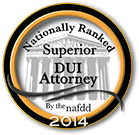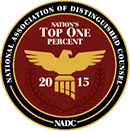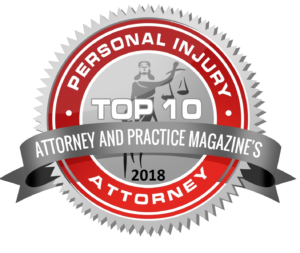Pedestrian accidents often stand out due to their serious and sometimes catastrophic consequences. For those injured in such incidents, establishing negligence is crucial to obtaining compensation for medical bills, lost wages, and other related expenses. In Virginia, like in many other states, proving negligence in a pedestrian accident case requires a thorough understanding of the legal principles and a careful gathering of evidence.

The Concept of Negligence
Negligence is a fundamental concept in personal injury law. It refers to the failure to exercise the care that a reasonably prudent person would exercise in similar circumstances. To prove negligence in a pedestrian accident case, the injured party, known as the plaintiff, must demonstrate that the driver, referred to as the defendant, failed to meet a standard of care, and this failure directly caused the accident and the resulting injuries. In Virginia, the legal standard for proving negligence involves four essential elements: duty, breach, causation, and damages.
Establishing Duty of Care
The first element in proving negligence is establishing that the defendant owed a duty of care to the plaintiff. In pedestrian accident cases, this is usually straightforward. Drivers have a legal obligation to operate their vehicles safely and to be aware of pedestrians on or near the roadway. This duty includes obeying traffic signals, yielding the right-of-way when required, and generally exercising caution to avoid causing harm to others. For pedestrians, the duty of care involves using crosswalks when available, obeying traffic signals, and not stepping into traffic unexpectedly.
Proving Breach of Duty
Once the duty of care has been established, the next step is to prove that the defendant breached this duty. A breach occurs when a driver fails to act with the level of care that a reasonably prudent person would under similar circumstances. Evidence of a breach can come from various sources, including eyewitness testimonies, traffic camera footage, and police reports. For instance, if a driver was speeding, running a red light, or distracted by a mobile device at the time of the accident, these actions can be considered breaches of duty. The plaintiff’s attorney will work to gather and present this evidence to show that the driver did not act as a reasonably prudent person would have in the same situation.
Linking Breach to Causation
The third element in proving negligence is causation. The plaintiff must demonstrate that the defendant’s breach of duty directly caused the accident and the injuries sustained. This element can be complex, as it requires showing a clear connection between the defendant’s actions and the harm suffered by the plaintiff. Medical records, testimonies, and accident reconstruction reports can play a crucial role in establishing causation. For example, if a pedestrian is struck by a car that ran a red light, medical records can link the injuries directly to the impact of the collision. Accident reconstruction specialists can provide detailed analyses of how the breach of duty led to the accident.
Demonstrating Damages
The final element in a negligence case is proving that the plaintiff suffered damages as a result of the accident. Damages refer to the losses and harm experienced by the plaintiff, which can be both economic and non-economic. Economic damages include medical expenses, lost wages, and property damage, while non-economic damages cover pain and suffering, emotional distress, and loss of enjoyment of life. To substantiate the claim for damages, the plaintiff’s attorney will present medical bills, wage statements, and other relevant documentation. Additionally, testimonies from medical professionals can help illustrate the extent and impact of the injuries.
Gathering Evidence
In a Virginia pedestrian accident case, gathering evidence is a critical aspect of proving negligence. The success of the case largely depends on the quality and quantity of evidence presented. Immediately following the accident, it is essential to collect as much information as possible. This includes taking photographs of the accident scene, obtaining contact information from witnesses, and securing copies of police reports. If traffic cameras or surveillance cameras are present, obtaining footage can provide invaluable visual evidence. Additionally, seeking prompt medical attention ensures that injuries are documented — which can be vital in establishing the link between the accident and the harm suffered.
Role of Law Enforcement Reports
Police reports can be a significant source of evidence in pedestrian accident cases. When law enforcement responds to an accident, they typically conduct an investigation and compile a report detailing their findings. This report may include information about the accident scene, statements from involved parties and witnesses, and the officer’s assessment of fault. Although police reports are not definitive proof of negligence, they can support the plaintiff’s case by providing a third-party account of the incident. It is essential for the plaintiff’s attorney to obtain and review the police report to identify any critical details that can help prove negligence.
Choosing a Personal Injury Attorney Personal Injury Case TimelineRelated Videos
Importance of Medical Documentation
Medical documentation is crucial in pedestrian accident cases, as it helps establish the extent of the injuries and their connection to the accident. Prompt medical attention not only ensures that the injured party receives necessary treatment but also creates a record of the injuries and their severity. Detailed medical records — including diagnostic tests, treatment plans, and follow-up care — provide a comprehensive picture of the plaintiff’s condition. Testimonies from treating physicians can offer insights into the long-term impact of the injuries and the expected recovery process. This information is vital in proving the damages element of a negligence claim.
Utilizing Testimonies
In some cases, testimonies may be necessary to establish certain aspects of negligence, causation, or damages. For instance, accident reconstruction specialists can analyze the accident scene, vehicle damage, and other factors to determine how the incident occurred and whether the defendant’s actions were the cause. Medical professionals can provide detailed explanations of the injuries, their impact on the plaintiff’s life, and the expected recovery process.
While the use of testimonies can add complexity to the case, they can also significantly strengthen the plaintiff’s position by providing specialized knowledge and insights.
Legal Strategies and Challenges
Proving negligence in a Virginia pedestrian accident case involves navigating various legal strategies and potential challenges. The defendant’s insurance company may attempt to dispute the plaintiff’s claims by arguing that the pedestrian was partially or entirely at fault.
Virginia follows a contributory negligence rule, which means that if the plaintiff is found to be even partially at fault for the accident, they may be barred from recovering any compensation. As such, the plaintiff’s attorney must be prepared to counter these arguments by presenting compelling evidence that clearly demonstrates the defendant’s negligence and minimizes any potential contributory negligence on the part of the pedestrian.
Navigating the Legal Process
The legal process for a pedestrian accident case involves several stages, each requiring careful preparation and attention to detail. Initially, the plaintiff’s attorney will conduct a thorough investigation to gather evidence and build a strong case. This may involve interviewing witnesses, obtaining police reports, and consulting with specialists. Once sufficient evidence has been collected, the attorney will file a formal complaint with the court, outlining the allegations against the defendant. The defendant will then have an opportunity to respond, and the discovery phase will commence. During discovery, both parties exchange information and evidence relevant to the case. This phase may include depositions, interrogatories, and requests for documents.
Settlement Negotiations and Trial
Many pedestrian accident cases are resolved through settlement negotiations rather than going to trial. Settlement negotiations involve discussions between the plaintiff’s attorney and the defendant’s insurance company to reach an agreement on compensation. If a fair settlement cannot be reached, the case may proceed to trial. During the trial, both parties present their evidence and arguments before a judge or jury. The plaintiff’s attorney will aim to demonstrate that the defendant’s negligence caused the accident and resulted in the plaintiff’s injuries and damages. If the plaintiff is successful, the court will award compensation based on the evidence presented.
Take the First Step Towards Justice — Contact Us Today
If you or a loved one has been injured in a pedestrian accident in Virginia, it is essential to seek legal assistance to protect your rights and pursue the compensation you deserve. The experienced attorneys at NovaLegalGroup, P.C. are dedicated to helping accident victims navigate the complexities of the legal system and achieve the best possible outcome for their case. Our team will work tirelessly to gather evidence, build a strong case, and advocate on your behalf.
Do not wait to seek the help you need. Contact NovaLegalGroup, P.C. today for a free consultation, and let us guide you through the process of obtaining the justice and compensation you deserve.










